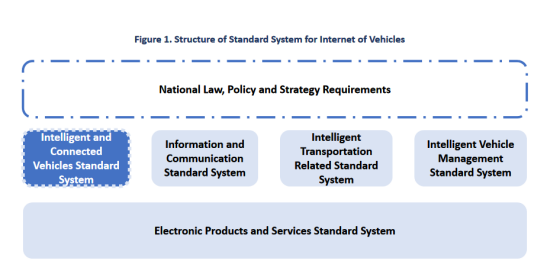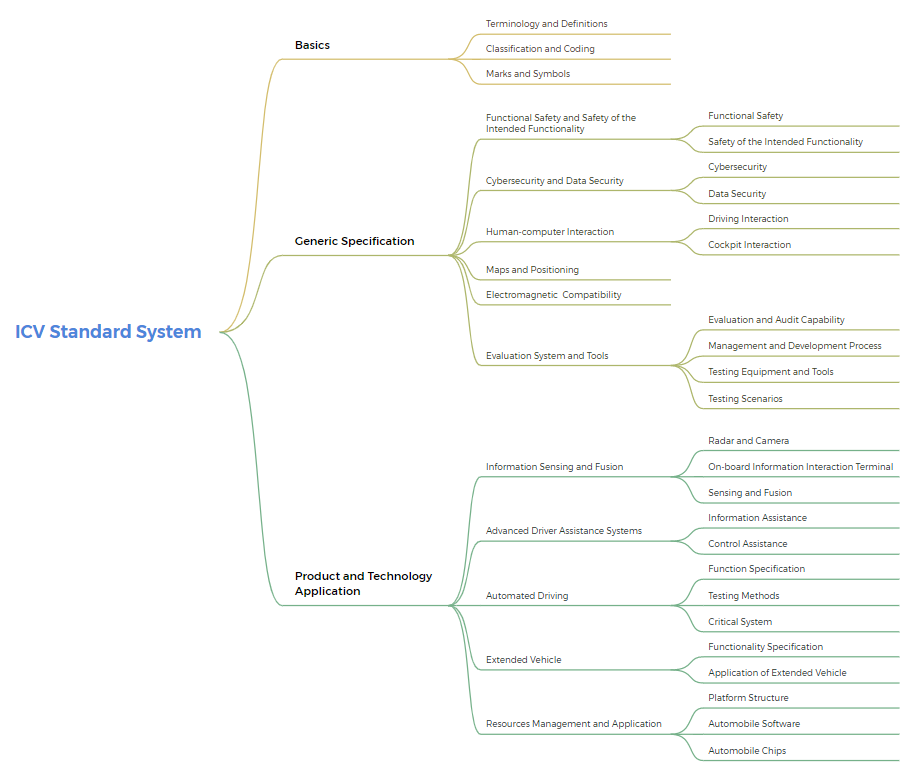On 26 July 2023, China’s Ministry of Industry and Information Technology (MIIT) and Standardization Administration of China (SAC) jointly issued the Guidelines for the Construction of the National Internet of Vehicles Industry Standard System (Intelligent and Connected Vehicles) (2023 Version) – hereinafter referred to as the Guidelines. The Guidelines are an important part of the national Internet of Vehicles (IoV) standard systems, which is illustrated in the figure below.

The Guidelines consist of five chapters: general requirements, general principles, the standard system, organization and implementation requirements, and annexes. The standard system outlined in the Guidelines has been significantly enriched and streamlined compared to that of the previous 2018 version of the Guidelines. Specifically, the original standard system only had two levels of categories, while the new version introduces a further division of several items under “Generic Specifications” and “Product and Technology Applications” – effectively forming a third level of category (see as Figure 2). Moreover, the new version deletes the “Relevant Standards” in the first level of category, as well as the two other items previously listed under that category: communication protocols, and the interface.

Figure 2: ICV Standard System (2023 Version)
According to its annexes, a total of 53 standards have been either released, reported for approval or recently initiated as standardization projects. Among them, 92% are national standards, while the remaining are sectoral standards; 17 standards consist of conversions from international standards (i.e. ISO standards and UN standards). Furthermore, the Guidelines present an innovative element, namely a clear indication of the standardization priorities for each category. For instance, for automobile chips, the standardization priorities include:
- Automobile safety chip technical requirements and testing methods;
- Automobile intelligent driving computing chip technical requirements and testing methods;
- Automobile intelligent cockpit computing chip technical requirements and testing methods, etc.
As for the next steps, MIIT will:
- Promote the construction of the intelligent and connected vehicle standard system.
- Continue to guide the Intelligent Connected Vehicle Sub-standard Committee of the National Automobile Standards Committee (SAC/TC114/SC34) and relevant units.
- Focus on key standardization areas and priorities, such as functional safety, cybersecurity, and operating system
- Participate in the coordination and formulation of international standards and regulations.
- Promote the implementation of key standards.
- Accelerate the integrated development of new energy vehicles with information and communication, intelligent transportation, and smart cities
- Leverage the guiding role of standards to promote the high-quality development of China’s intelligent connected automobile industry.




